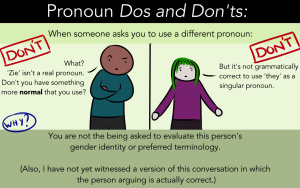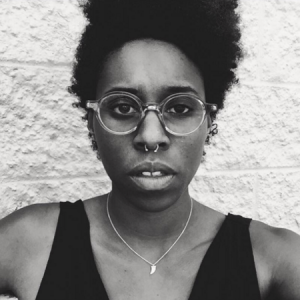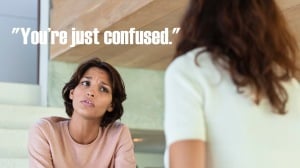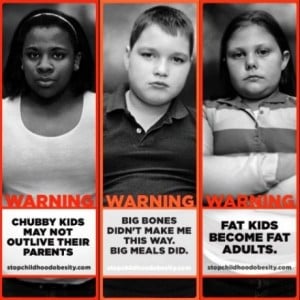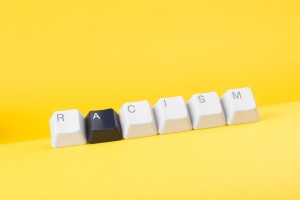
Source: Wired
Nearly every day, I come across some comment from a person who has White privilege, such as myself, who says something along the lines of “Why does everything have to be about race?!”
I usually reply that if people of color really did make everything about race whenever something racially biased occurred, your head would probably explode.
The truth is that unless we are purposefully exploring it, most White people only think about racial bias if it’s specifically brought up or if we’re convinced we are a victim of it. As a White person, I know that if I decided not to think about it, read about it, or talk about it, I could pretty much forget about it.
And perhaps that is one reason why some White people have a hard time believing that racial bias exists at the level that people of color say it does; we are not exposed to even a fraction of the examples of racial bias that are out there, so we just don’t believe it.
This article will look at five examples of racial bias (that take place in completely different ways) in order to help demonstrate its reality to those who may doubt the breadth of its existence.
1. Racial Bias in Pain Perception
I am going to go out on a limb here and assume that many people want to have adequate pain management in the event they ever need it. Unfortunately, a racial bias exists that has likely led some Black patients to receive inadequate pain management.
Research has indicated that people believe that, relative to White people, Black people do not experience as much pain and are perhaps more resilient.
Yes, I’m serious.
Now, the reason for this bias is strongly related to an assumption of the social status of Black people. For some reason, people have a perception that those who are privileged in status experience higher levels of pain than people who have suffered hardships or have a lower social status.
The research determined that Black people were viewed as having more hardships and having less status, and therefore they were viewed as having lower levels of pain and somehow more resilient.
As the researchers indicate in their article, this idea may seem complimentary – at first. It may sound like the hardships and strength of Black people are actually being considered.
The problem is that these views have negative consequences when you apply them in a completely backwards way! “I think you have had hardships, and therefore I think you need less help.”
There is absolutely no evidence that suggests that Black people experience less pain than White people, and that conscious or unconscious assumption can lead to real suffering.
2. Racial Bias in Crisis Response
Certainly there is no racial bias in times of crisis, right?
It is fairly common knowledge that allegations of racial bias occurred during some fairly recent natural disasters that largely affected poor Black people – namely Hurricane Katrina and the 2010 earthquake in Haiti. But has there been any research to back them up?
Well… yes.
In fact, even before these particular disasters, research has found that the race of crisis victims does impact a person’s decision to help them.
In the cases of Katrina and the earthquake in Haiti, researchers surveyed people about their perception of the disaster victims. They were seen as being poor and mostly Black. The participants who scored higher in racism were more likely to view the victims negatively and blame the victims for being impacted by the disaster.
In addition, they viewed the disaster as not being very severe and believed that the victims did not need as much help.
To make matters worse, there is evidence that suggests that racial bias is one reason why people falsely believe that some emergency responses are adequate, when in fact they’re not.
Researchers also found that discrimination against Black victims was even more likely if people believed they had a legitimate reason not to help that had nothing to do with race.
So, for example, if it was believed that helping was going to be very cumbersome or expensive, less help was provided to Black people than White people, even in high states of emergency.
In short, pre-existing racial prejudices can lead to the minimization of a crisis, victim-blaming, justification to withhold assistance, and underestimating how much help is really needed.
Seems like something that people have the right to complain about.
3. Racial Bias in Customer Satisfaction Surveys
It’s a little scary to think that more insidious forces, not an impossible-to-please snarky customer or your own poor customer service skills, could be behind you receiving a poor customer service satisfaction survey.
But as it turns out, research has found that women and people of color are more likely to get negative customer satisfaction surveys compared to White males.
This may not seem like a serious thing, but in actuality it very much is.
Many companies use these surveys to help rate employees; the outcome of which could have an effect on hiring, wages, promotions, or even someone keeping their job.
The fact that this bias exists is not a secret to big business.
In 1992, Shoney’s Restaurant settled a lawsuit for $132.5 million and their executives admitted to altering their staffing practices because they realized that White customers preferred White service providers and they wanted to increase customer satisfaction.
In 2003, Abercrombie & Fitch paid out $40 million in a similar lawsuit that not only involved racial bias, but also gender bias. In addition to the cash settlement, they also agreed to create an office of diversity.
Many of us with White privilege may be completely oblivious to racially biased customer satisfaction surveys and race-related discriminatory practices of big business. Indeed, unless you are paying attention, you have no reason to look for bias since you are not the target.
And this is why so many of us White folks pull out the standard “Oh my God, why is everything about race?” argument when someone brings up such bias.
When you don’t experience it, you’re less likely to believe it – even if it is all around you.
4. Racial Bias in Car Loans and Mortgages
Yet another example of racial bias that has clearly had a negative impact on people of color is in the area of vehicle and home purchases.
Both General Motors Acceptance Corporation and Nissan Motors Acceptance Corporation settled lawsuits after evidence suggested that they profited from a kick-back system that negatively impacted Black and Latinx people when they went to purchase a vehicle.
For example, it was determined that an incredible amount of Black car buyers spent about 50% more than White car buyers in dealer mark-ups over an eleven-year period – something their attorneys were quick to point out couldn’t have happened by chance alone.
Several banks have been on the receiving end of lawsuits after evidence suggested a racial bias when perspective homebuyers were applying for loans.
For example, Wells Fargo had to pay out $175 million when it appeared that their lending practices forced Black and Latinx customers to pay higher rates for loans than their White counter parts, even when those customers had equally sound credit.
In September 2014, New York’s Attorney General filed suit against Evans Bank alleging that they have been participating in an illegal practice called “redlining,” which essentially means they have been purposely avoiding offering mortgage opportunities to racial minorities.
What is the evidence, you might ask?
Well, according to the attorney general, the map that Evans used to determine their lending area for Buffalo covered everywhere with the exception of east side of the Lake Erie shoreline, which is where 75% of the city’s Black population calls home.
Out of the 1,114 mortgage applications that Evans had between the years of 2009 and 2012, only four – that’s right, four – applicants were Black, and only one of them was from the east side.
And the evidence of this bias is not just based on lawsuits, but research has also found that Black and Latinx people are more frequently turned down for mortgage loans than Whites.
Not a minor issue. This is about the ability to secure a home and transportation.
The fact that this kind of bias exists should be disturbing to anyone who cares about the fair treatment of others.
5. Racial Bias in Agriculture
Although it has been covered periodically in the media, some folks may not be aware of the enormous class action lawsuit that was filed on behalf of Black farmers against the US Department of Agriculture (USDA) back in 1997.
What was discovered was that Black farmers were not being treated fairly for years by the local county committees who made the decisions about farm loans or assistance. The USDA did not properly investigate the complaints of such bias.
The results were devastating for some farmers. In addition, it was also determined that women, Latinx, and indigenous farmers faced bias in farm loans and would later be allowed to seek compensation.
A settlement was reached for some 16,000 Black farmers in1999, but due to confusion over filing deadlines and other issues, the settlement did not begin to cover the many other farmers who were impacted.
Over a decade later, another settlement agreement was reached in the amount of $1.25 billion to finally compensate more than 68,000 Black farmers who were not assisted by the original lawsuit.
It’s important to mention that the USDA didn’t really contest these claims, and their spokespeople have admitted to the discriminatory practices that rightfully led to these settlements.
So, the next time you hear someone say that discrimination and prejudice went down with the Civil Rights era, you can always mention this example in a long list of other examples where racial bias was undeniable, harmful, and recent.
***
As mentioned several times in this article, some of these biases are not necessarily the result of overt and conscious racism. Our prejudices are frequently unnoticeable, even to ourselves.
What I hope these examples of racial bias indicate, though, is its overwhelming pervasiveness. It is, indeed, everywhere – from our farms to our hospitals. Our car lots to our clothing stores.
Ideally, this article demonstrates to those who say “Why does everything have to be about race?” that we don’t, in fact, over-examine race – but rather under-examine it.
[do_widget id=”text-101″]
Dr. Robin Landwehr is a Contributing Writer for Everyday Feminism She’s a mental health counselor and an unapologetic feminist. She holds a Doctor of Behavioral Health degree from Arizona State University, a M.S. degree in Mental Health Counseling from Capella University, and is a licensed counselor in North Dakota and Florida. You can follow Robin on Twitter @RobinLandwehr1 or visit her sometimes neglected personal blog at The Hippie in Me Blog.
Search our 3000+ articles!
Read our articles about:
Our online racial justice training
Used by hundreds of universities, non-profits, and businesses.
Click to learn more












